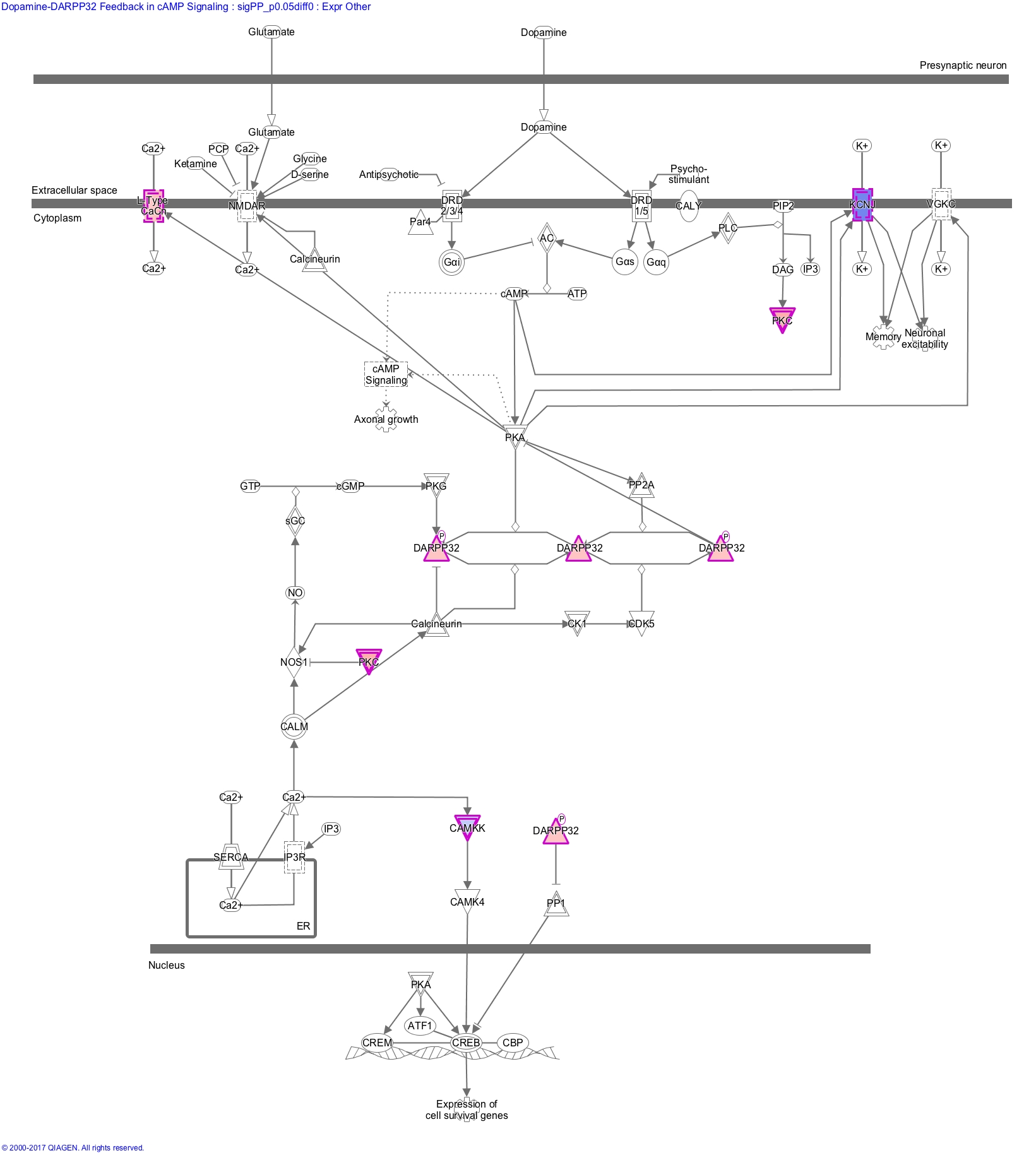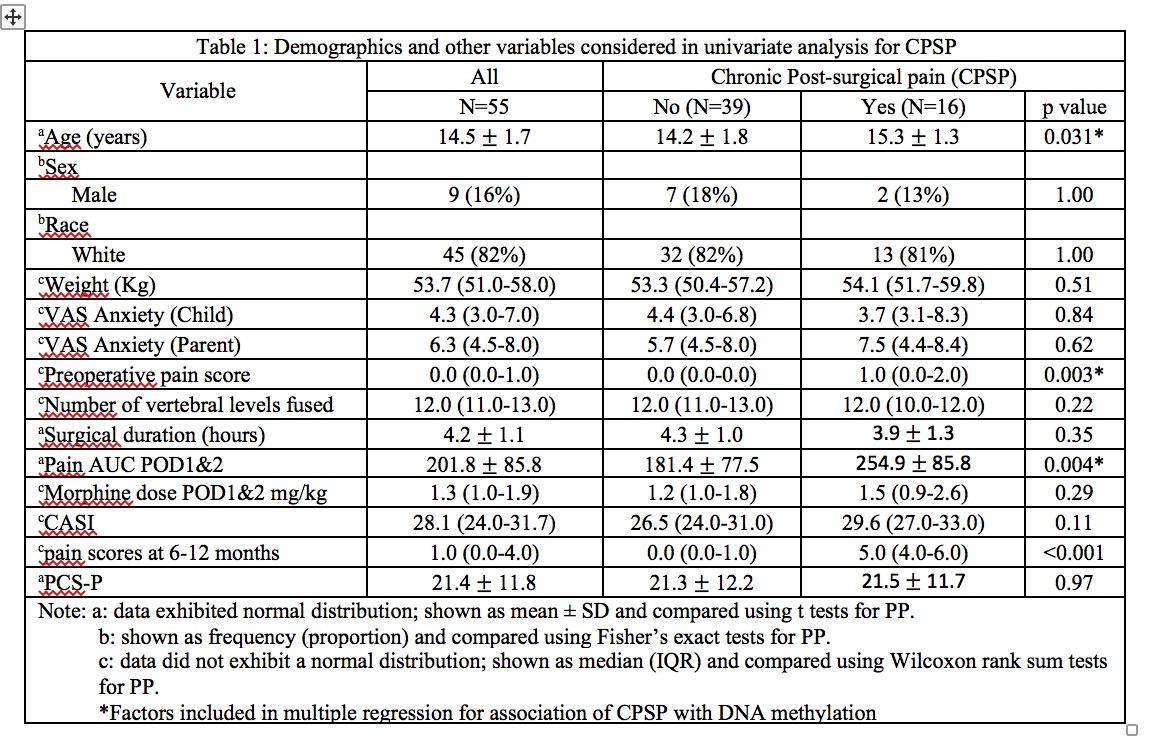YIA-3
Systems biology approach identifies common biological pathways enriched in DNA methylation, associated with chronic postsurgical pain and anxiety, in children undergoing surgery
Walter C, Zhang X, Ji H, Stubbeman B, Geisler K, Chidambaran V
Cincinnati Children's Hospital, Cincinnati, OH, USA
Introduction
Chronic postsurgical pain (CPSP), a significant socioeconomic problem affecting 15-38% children undergoing major surgery1, involves multiple signaling and modulatory pathways. CPSP’s pathophysiology includes a genetic risk as well as environmental factors like anxiety. Hence, it is necessary to understand gene-environmental influences (epigenetics) on mechanisms of CPSP and anxiety. A common epigenetic modification, DNA methylation at CpG sites, is involved in pain maintenance2, but single CpG sites yield small effect. Here, we use a systems-biology approach, anticipating that DNA methylation differences aggregate when genes are grouped according to their cellular pathways, to study pathways enriched in epigenetic modifications associated with both CPSP and anxiety.
Methods
We conducted a prospective observational study in 55 adolescents undergoing spinal fusion for idiopathic scoliosis. Data collected included demographics, pain scores, opioid consumption, surgical/anesthesia factors and questionnaires to assess child anxiety sensitivity (CASI) and parent/child catastrophizing (PCS-C, PCS-P). Subjects were followed over 12 months for CPSP outcomes. Blood samples collected preoperatively were analyzed using MethylationEPIC arrays. Epigenome wide analyses were conducted for association of DNA methylation with CPSP and CASI after adjusting for significant covariates. Ingenuity pathway analysis (IPA) was used to identify shared canonical pathways involved in CPSP and CASI.
Results
Demographics for the 55 subjects are given in Table 1. Incidence of CPSP was 29% (16/55). After quality control, 842,148 CpG sites were included in beta models, controlled for age, sex and race ± surrogate variable for both outcomes. Final models for CPSP contained age, preoperative and acute postoperative pain, while race and PCS-P were retained in the model for CASI. For association with CPSP, 290 sites (p≤0.05, change in beta≥0.05) and for CASI, 4,872 sites (p≤0.05, change in CASI>5 units) met criteria for inclusion in IPA. The top canonical pathway identified for CPSP and CASI was the Dopamine-DARPP32 pathway (p-value 0.00016 for CPSP; p-value 1.08*10-8 for CASI).
Conclusion
Using systems biology-based integrative computational analysis, we identified a common, reversible pathway for CPSP and anxiety in children undergoing spine surgery. The Dopamine-DARPP32 pathway (Fig) is a key player in emotion and reward, amenable to dopamine/NMDA modulation. This opens new avenues for personalized interventions based on epigenetics.
Ref
1) Rabbitts et. al. J Pain. 2017 Jun;18(6):605-614
2) Crow et. al. Genome Med. 2013 Feb 15;5(2):12
Top













